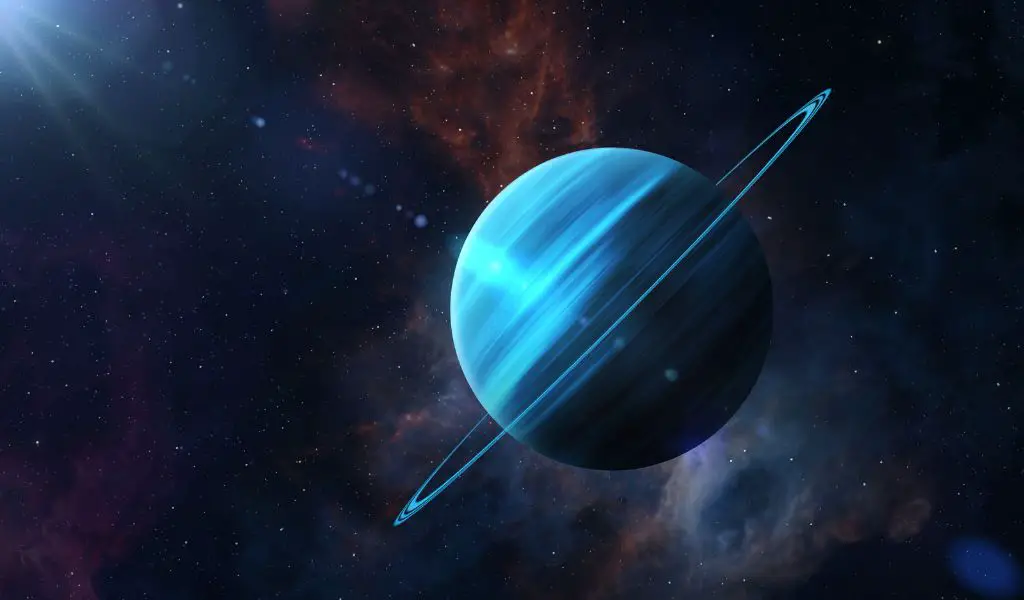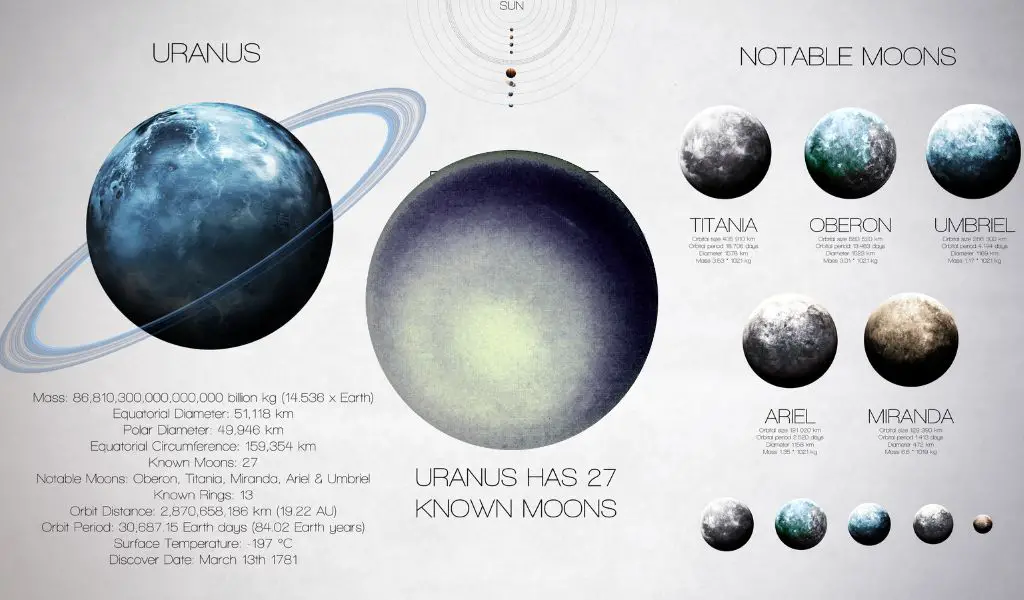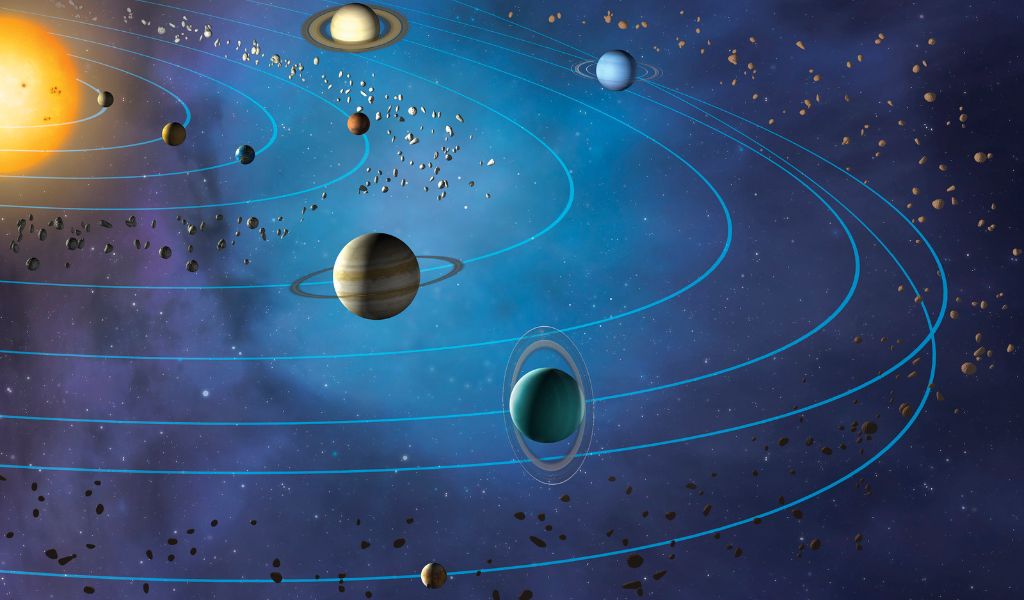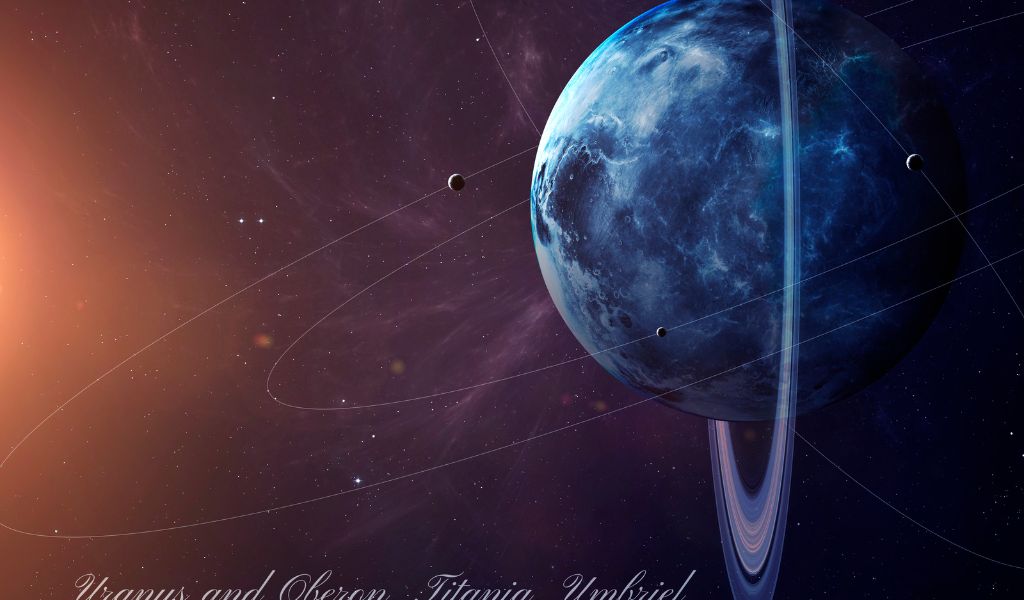Uranus is an interesting planet, with many unique features. Its unique tilt has led to some interesting theories about its formation, and its unique rings and moons make it an interesting subject for study. In addition, its weak gravitational pull and powerful magnetic field are intriguing. There is still much to learn about this distant world, and it continues to captivate scientists and astronomers.
Interesting Facts About Uranus
Uranus is the seventh planet from the Sun and is the third-largest planet in the Solar System. Despite its size, there are some fascinating and lesser-known facts about Uranus that are worth exploring.
🔬 Subscribe to SciMail
Get the latest science discoveries straight to your inbox!
Uranus is the only planet in the Solar System named after a Greek god.
Uranus was named after the Greek god of the sky and heavens, and was the father of many of the Greek gods and goddesses.
Uranus is tipped on its side.
While most planets spin on an axis that is more or less perpendicular to the plane of its orbit, Uranus’ axis is tilted by 97.77 degrees. This means that its north and south poles are located where most other planets have their equators.
Uranus is surrounded by 13 faint rings.
While Saturn is known for its prominent rings, Uranus has 13 faint rings that were only discovered in 1977. The rings are composed mainly of dust particles and icy chunks and are believed to be relatively young, having formed within the last few hundred million years.
Uranus has 27 known moons.
The largest and most well-known of the moons is Titania, which is about 1,578 miles (2,538 km) in diameter. The moons all have interesting and sometimes unusual names, such as Oberon, Umbriel, Ariel, and Miranda.

Uranus has an unusual magnetic field.
Unlike the other planets in the Solar System, which all have a magnetic field aligned with their rotation, Uranus’ magnetic field is not aligned with its rotational axis. Instead, it is tilted by about 60 degrees and offset from the planet’s center by about a third of the planet’s radius.
Uranus has a very cold atmosphere.
The average temperature on Uranus is -357 degrees Fahrenheit (-214 degrees Celsius), making it one of the coldest places in the Solar System. The atmosphere is composed mainly of hydrogen and helium, with traces of methane and other hydrocarbons.
Uranus has very faint clouds.
The clouds on Uranus are composed of a mixture of methane and ammonia ice crystals and are very faint, making them difficult to observe from Earth. They are usually located near the equator and are thought to be responsible for the blue-green color of the planet.
Uranus is losing its atmosphere.
Scientists believe that Uranus is slowly losing its atmosphere due to its interaction with the solar wind. This process is believed to be responsible for the planet’s faint rings and faint clouds.
Uranus has a unique rotation pattern.
Unlike the other planets in the Solar System, Uranus rotates in the opposite direction to most of them. This means that while most planets spin from west to east, Uranus spins from east to west.

Uranus has very few craters.
The few craters that exist on Uranus are believed to be relatively young, having formed within the last few hundred million years. This suggests that the surface of the planet has been relatively active in the recent past.
Uranus has the coldest cloud tops in the Solar System.
The cloud tops on Uranus are the coldest in the Solar System, with temperatures as low as -371 degrees Fahrenheit (-224 degrees Celsius). This is due to the fact that Uranus is so far from the Sun, and the clouds are composed of frozen methane and ammonia.
Uranus has the faintest visible atmosphere of any planet in the Solar System.
The faint atmosphere of Uranus is composed mainly of hydrogen and helium, with trace amounts of methane and other hydrocarbons. The atmosphere is so faint that it is difficult to observe from Earth, even with powerful telescopes.
Uranus has a very weak magnetic field.
The magnetic field on Uranus is much weaker than the magnetic fields of the other planets in the Solar System. This is due to its unusual tilt and offset from the planet’s center. It has the weakest gravitational pull of any planet in our Solar System, and it is about 1/14th that of the Earth’s gravity.

Uranus is the least dense planet in the Solar System.
Uranus is the least dense of all the planets in the Solar System, with a density of just 1.27 grams per cubic centimeter. This is due to the large amount of ice in its interior, which makes up about 15 percent of the planet’s mass.
Uranus has the third-longest day of any planet in the Solar System.
Despite having a rotation period of 17 hours, 14 minutes, and 24 seconds, Uranus has the third-longest day of any planet in the Solar System after Mars and Earth.
Uranus has the second longest year in the Solar System.
A year on Uranus lasts just 84 Earth years. This is due to its distance from the Sun, which is almost twice as far away as Saturn.
Uranus is the least-known planet in the Solar System.
Despite its size, Uranus is the least-known planet in the Solar System, with only a handful of spacecraft having visited the planet in the past. With new missions and technology, scientists hope to uncover more secrets about this mysterious and fascinating planet.






Leave a Reply